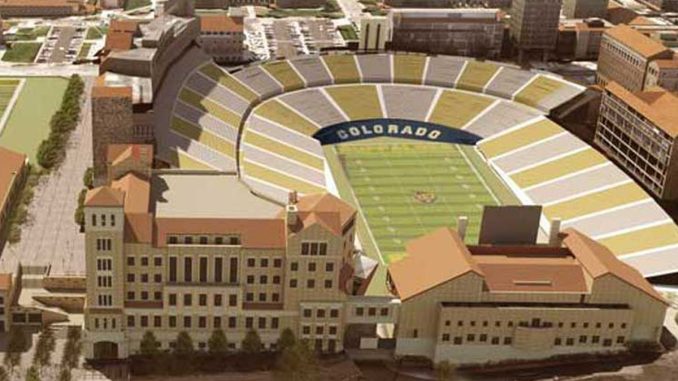
Colorado State University Is Putting Its Money on a Stadium.

Colorado State University features goal posts and end zones because it has seen the future of higher education.
There is now a projected budget for the project, which dates back more than 20 months after USF redoubled its efforts to construct an on-campus football stadium.
The Bulls anticipate spending $340 million on it, of which $200 million will be funded over a 20-year period. Without assistance from the state or taxes, the remainder will come from the university.
These specifics are taken from the agenda for the board of trustees’ finance committee’s virtual meeting on Tuesday. The numbers give the best indication yet of the Bulls’ plans to relocate from Raymond James Stadium to a 35,000-seat stadium north of the practice facilities in 2026, even if they are still preliminary and subject to board approval.
The agenda item calls for $140 million from the university. That includes:
• $50 million in fundraising from the private USF Foundation.
• $31 million from the capital improvement trust fund. This money generally comes from student fees and pays for buildings like USF’s new student health and wellness center.
• $34 million in auxiliary funds and proceeds from the sale of broadband equipment in 2017.
• $25 million from the expected sale of broadband licenses.
USF would take on $200 million in debt at an estimated 5.5% taxable interest rate to pay for the rest. The Bulls plan to pay for that through new or expanded revenue streams.
The consulting group Conventions, Sports & Leisure International estimated USF will make $7.6 million in ticket sales in the first year, plus another $8.4 million in donations for priority or premium seating. It also estimates more than $700,000 in annual income through parking/concessions, $250,000 for non-gameday rentals/other events and $2.5 million for naming rights to the building; USF makes nothing from those categories at Raymond James Stadium.
/cdn.vox-cdn.com/uploads/chorus_image/image/59179095/1a.0.jpg)
Those figures assume an average attendance of 31,130. That, based on the group’s research, is an ambitious goal. New on-campus stadiums typically see a 17% jump in attendance compared to the old venue. Apply that to USF’s recent crowds (20,000 scanned tickets per game), and the Bulls’ attendance would be closer to 24,000.
The consultants expect $20.5 million in a new stadium’s net operating revenue against $5.3 million in operating expenses. That alone isn’t enough to cover the $17.8 million in annual debt service. Meeting documents project the USF Foundation — the school’s private, philanthropic arm — to contribute between $16 million and $25.8 million annually in support.
The agenda item includes a few other new details. It recommends 10,000 student tickets, plus a party patio and field-level club of up to 800 members. The 1,900 premium seats include 1,200 club seats, 40 loge boxes and 24 luxury suites.
USF considered a public-private partnership to fund the stadium but opted against it because of the “complexity, scope and nature of the Project,” according to the agenda item. The Bulls could build a stadium for less —$194 million, it estimates. “However, a higher quality stadium is necessary to generate revenues to support construction” through items like premium seating.
In March, USF’s board of trustees voted to allocate up to $22 million for the ongoing design phase. Its contract with the design-build team of Populous and Barton Malow allows for the Bulls to walk away from the project without penalty.
If the finance committee approves the plan Tuesday, the board is expected to vote on the proposal at the trustees’ June 13 meeting. Construction could then begin as soon as October, according to the agenda.
The final price tag will not be set until Barton Malow presents a guaranteed maximum price — likely in the spring or summer of 2024. If that figure exceeds $340 million, the Bulls will likely rely on fundraising to cover the gap.
Leave a Reply